Features of nut taps
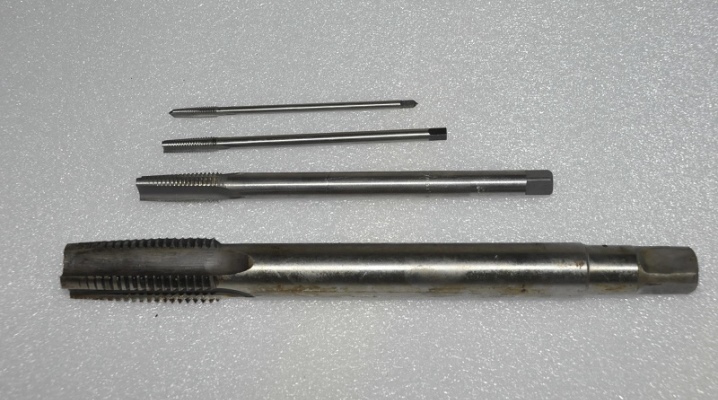
The threaded connection is one of the most reliable and at the same time is universal, therefore it has found widespread use in many manufacturing industries. To form this type of connection, it is necessary to cut a thread, and in this work it is difficult to do without a nut tap. This device has many types, depending on the characteristics of the thread being produced.
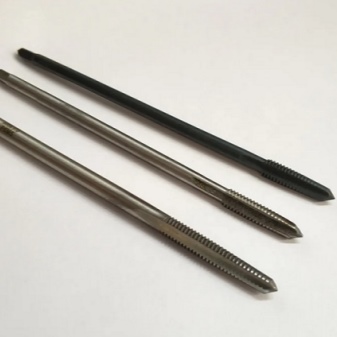
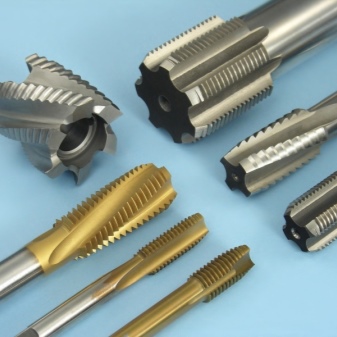
What is it and why are they needed?
A nut tap is in the form of a screw, which has straight or cut helical grooves that form cutting edges. The tail element of this device is attached to the crank, and its working area is fixed in the material where the hole is planned to be made. With the help of rotations, threading occurs. In the working part of the nut tap, there is both a cutting and a gauging surface.
Also, this device provides a face, with the help of which friction against the object of processing is prevented. The number of side grooves in this tool can be from 2 to 6. These elements not only remove the chips, but also carry out the lubrication into the treated area. The tapping element of the tap has a cone shape, which contributes to the absence of difficulties when entering the tool.

The threading tool is used when working with aluminum, copper, brass, and other viscous metals. To do the job with high quality, the master often needs about 3 types of tap. If steel or solid stainless steel is processed, then a set of 5 components can be used. The consumer may also find a nut tap that is suitable for working with hard and soft plastics.
According to GOST, threading tools can be made from high-carbon tool steel, high-speed steel and hard alloys.
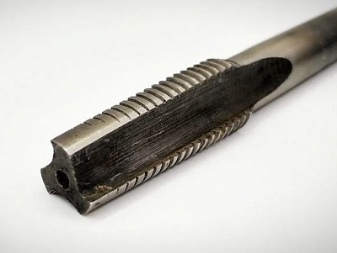
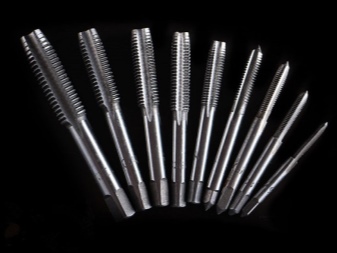
Varieties and labeling
Industrial enterprises produce many varieties of nut taps, which have their own design features and operational capabilities. According to the design features, the following types of tools are distinguished.
- Chip and groove. The tap has a shortened length, in other words it is called a flute. Its design features facilitate threading in objects made of tough low carbon steel, aluminum alloy, or high strength alloy steel.
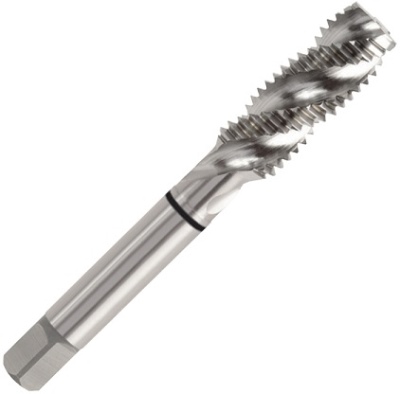
- Has grooves that run along the line of the screw. The installation of such taps is considered relevant in industries with metalwork processing centers. They are also often used in the formation of blind types of carving.

- Equipped with cutting teeth. The teeth of this device are staggered and cut after one, therefore, when using it, a minimum frictional force is observed.
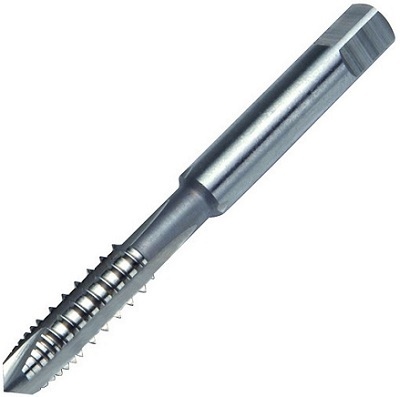
- Stepped. This type of nut taps has a couple of sections, each of which has a specific purpose. The 1st is based on the generator circuit, and the 2nd on the profile. In a stepped tool, the first part deals with cutting and the second part with anti-aliasing.
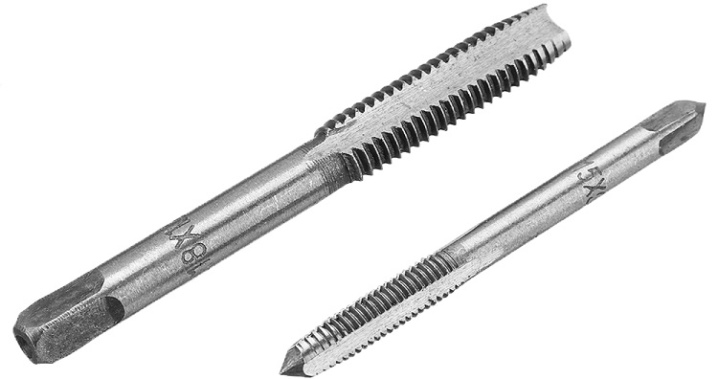
- Combined. This type of fixture includes several types of threaded tools and therefore is considered universal.
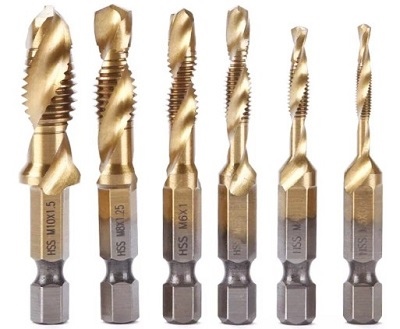
- Tap - broaching has found its application in the formation of the thread of through holes with different parameters. With the help of these devices, work is performed on lathes with a part fixed in the chuck.Thus, the thread moves automatically with the help of the machine slide, and it rotates with the spindle.

- Equipped with an internal cavity. During the processing of the part, its cooling is observed. Thanks to the use of taps of this type, a high productivity of threading is observed.
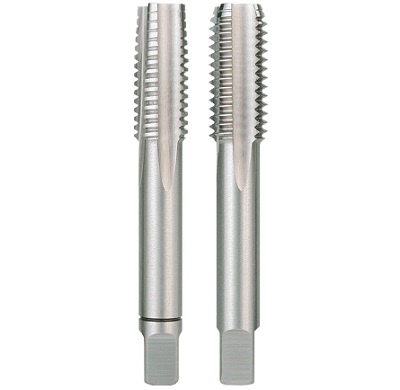
- Bell tap found its application when it is necessary to cut an internal thread with a large diameter. This type of tool has a prefabricated structure, which includes separate cutting parts.
All of the above threaded tools are externally different from each other, so it is impossible to confuse them.
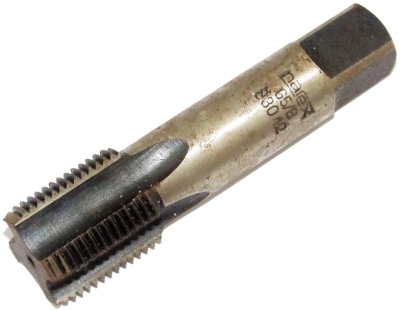
By the type of thread produced, nut taps are divided into these types.
- Metric. This tool is used to cut a metric type of thread. As a result of the work, elements with the shape of a triangle are obtained. The marking of such parts has the letter "M". To select a tap for a specific diameter, experts advise using a specific table.
- Inch the tool is characterized by the conical shape of the working part. For this tap, the unit of measure for diameter is inch.
- Pipe. This type of tool can be in the form of a cylinder and a cone. This kind of device is usually used to form pipe threads.
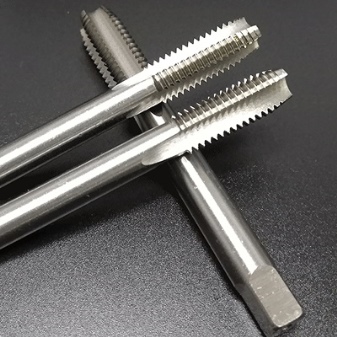

The production of elongated and other nut taps that operate on manual or machine control is regulated by GOST 3266-81. Products with a curved shank must be manufactured strictly in accordance with the specially issued GOST 6951-71. The type and size of the thread begins the marking of the fixtures, for example, M6, M8, M4, M5, M3, M2. After these designations, you can see the accuracy class according to ISO2 or DIN. Also, the mark of the material may be present in the marking of the tap.
If the tool has the HSS designation, it means that it is made of hardened steel. On the tail section of a nut tap, you can see information about the thread run, the angle of inclination of the grooves, the pitch of the spiral grooves, the rotation of the grooves, the group of application, internal cooling.
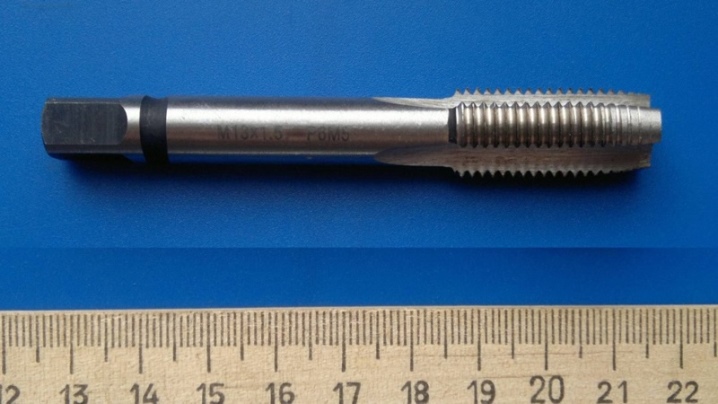
How to use?
In order for the nut thread to be cut correctly, it is worth remembering the rules for the step-by-step use of the tool.
- The preparation of the nut for cutting consists in the correct selection of a drill with a diameter that is optimal for certain purposes.
- Precise drilling of a hole without distortions and scrap.
- Tapping with standard taps. To this end, it is worth positioning the tap at an angle of 90 degrees. Further, the master should perform rotational operations with particular care.
- After each of the revolutions, it is required to do a half-turn reverse in order to remove chips from the grooves.
- The nut should be threaded through the shank, and then cut into another part.
When the thread is finished, the master should check the condition of the thread. If the work is done correctly, the screw will fit correctly without resistance and bending. A nut tap is a threading tool that works with nuts of different sizes. It is almost impossible to replace this device with a similar one, since it is characterized by a unique design and functionality.
Thanks to a wide variety of nut taps, the master will be able to choose exactly the option of the tool that will help him solve a specific task.

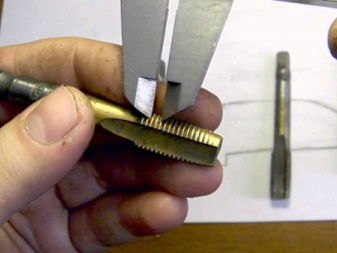
In the next video, you will find the types and purposes of taps for threading.













The comment was sent successfully.